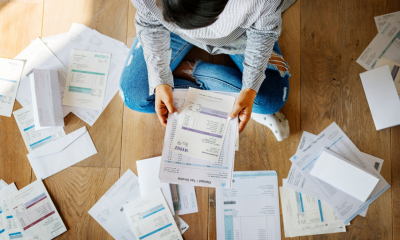
A trust deed offers a debt solution in Scotland, helping people to manage debt repayments that have become unaffordable. A trust deed allows a person to manage their repayments by consolidating them into more manageable monthly repayments.
But before this happens, you will need to get your creditors' agreement for the process.
If you are Scottish and struggling to repay your debts, here's a quick guide explaining how a trust deed works and how it can help you become debt-free. Let’s read on!
Step 1: Set up your arrangement
First things first, you need to contact an Insolvency Practitioner (IP) to discuss your financial situation. The IP will act as your trustee if you decide to proceed with a trust deed.
The IP will review all your debts and work on creating a repayment budget that you can put into practice. The IP will help you calculate how much you can afford to repay every month until your debt has been cleared.
A trust deed allows you to consolidate all your outstanding debts into a single monthly payment.
Step 2: Get approval from your creditors
Once the IP has reviewed all your debts, the next step is to get your trust deed agreed. Your trustee will send a proposal to your creditors. The proposal will state the amount you can pay and what creditors can expect to receive during the period the trust deed is in place.
The trust deed will be advertised on the Register of Insolvencies, which will give your creditors a five weeks to review the proposal.
If your proposal only faces objections from minor creditors, your trust deed will turn into a protected trust deed. If none of your creditors respond to the proposal, your trust deed will be automatically approved and will apply in Scotland.
Step 3: Keep up with your monthly payments
Once your trust deed is protected, your creditors will be prohibited from taking any further action to recover debts from you.
This gives you the time and space to gradually repay what you owe without the constant fear of legal action. This will give you peace of mind regarding your debt.
To get to the position where you are debt-free, all you have to do is keep up with the monthly payments. You can read further information on trust deeds on the Citizens Advice Scotland website.
Step 4: Get discharged from the agreement
Providing you stick to the budget and make your monthly payments, you will complete the term in about four years. After that, you will be discharged from the trust deed agreement.
You will receive a certificate stating that you have completed your trust deed successfully. All creditors that were included in the trust deed will write off the remaining debt. This means that none of the creditors that were party to the trust deed can pursue you for any further payments you owe.
You're now free from debt and can start a new financial chapter in Scotland.
Copyright 2024. Featured post made possible by Lela Smith.